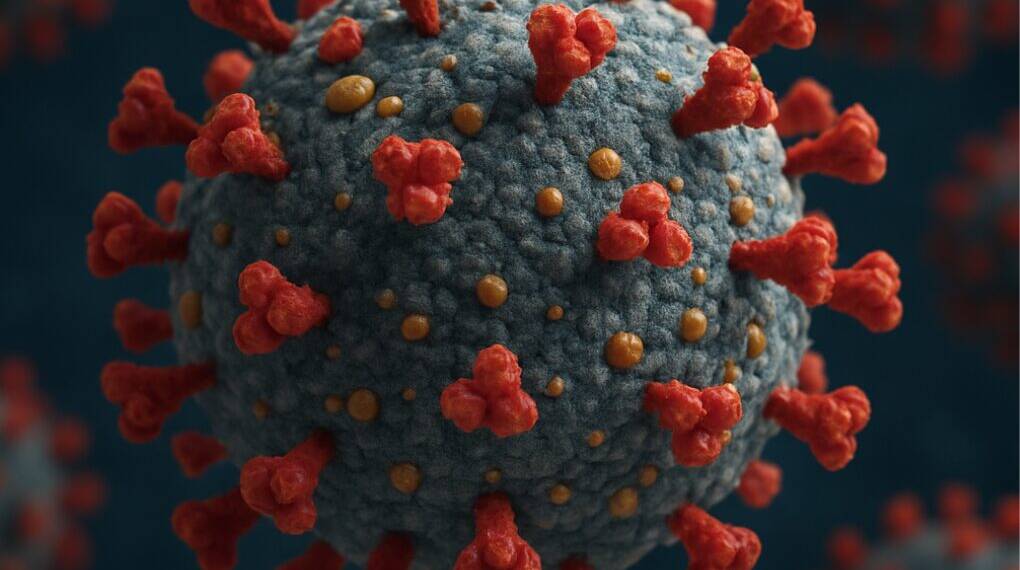A new wave of COVID-19 infections is sweeping across the globe, driven by the emergence of NB.1.8.1—a highly transmissible subvariant of Omicron JN.1. First detected in China, NB.1.8.1 has led to a significant rise in hospitalizations across Asia and has now reached the United States, raising fresh concerns about pandemic preparedness and the evolving nature of public health policy.
Variant Spreads Across Asia and Beyond
Asia has been hit particularly hard. In Hong Kong, COVID-19 cases have surged to their highest levels in over a year, accompanied by a sharp rise in emergency room visits and hospitalizations. Taiwan has also experienced a spike in severe cases and fatalities, prompting authorities to accelerate stockpiling of vaccines and antiviral medications.
The World Health Organization (WHO) has designated NB.1.8.1 a “variant under monitoring” due to its rapid international spread. As of late May, it has been detected in at least 22 countries, including Japan, South Korea, France, and Thailand. In the U.S., the Centers for Disease Control and Prevention (CDC) identified cases via airport screening beginning in late March, with subsequent reports from California, New York, Ohio, Rhode Island, and Hawaii.
Despite its increased transmissibility, there is no current evidence that NB.1.8.1 causes more severe illness. Symptoms remain similar to previous variants: cough, sore throat, fever, and fatigue. The WHO has assessed the variant’s overall public health risk as low—but its rapid spread is enough to prompt renewed calls for vigilance.
India has also reported cases of NB.1.8.1 and another subvariant, LF.7, primarily in Tamil Nadu and Gujarat. As of May 19, India reported a nationwide increase of around 750 new infections, although most cases remain mild.
U.S. Policy Shift Draws Attention
In the United States, NB.1.8.1 has not overtaken LP.8.1, which still accounts for roughly 70% of cases. However, its emergence has coincided with a drastic shift in national vaccine policy. Under the Trump administration, the Food and Drug Administration (FDA) has limited approval of updated COVID-19 vaccines to seniors and individuals with underlying health conditions. Broader approval will now require new, large-scale clinical trials.
This change also removes healthy children and pregnant women from the CDC’s recommended vaccination schedule—raising concerns about reduced access to updated vaccines in the coming fall season. Critics worry the policy may leave large portions of the population vulnerable as NB.1.8.1 continues to spread.
Although current vaccines targeting the KP.2 variant are believed to offer some protection, many experts argue that updating shots to better match LP.8.1 would provide stronger immunity, given its genetic proximity to NB.1.8.1. While the FDA’s advisory panel has recommended targeting a JN.1 subvariant for fall vaccinations, the administration’s new restrictions have complicated implementation.
Dr. Paul Offit, a vaccine expert at the Children’s Hospital of Philadelphia, has voiced concern over the policy, questioning how vaccine eligibility will be managed and warning that access could become “less insurable and less available.”
Renewed Debate Over Vaccine Strategy
The resurgence of COVID-19 has reignited longstanding debates about vaccine efficacy and public health priorities. NB.1.8.1’s ability to partially evade immunity—whether from prior infection or vaccination—has been cited as a limitation of current vaccines. Subhash Verma, a microbiologist at the University of Nevada, Reno, pointed out that the variant’s immune escape capability exceeds that of LP.8.1, reinforcing calls for updated booster formulations.
In Africa and other regions, vaccine uptake remains uneven due to logistical hurdles and persistent misinformation. This hesitancy, particularly among high-risk populations, poses an additional challenge as the global fight against COVID-19 enters a new phase.
Meanwhile, critics argue that the current U.S. focus on vaccines risks sidelining other essential public health tools, such as improved ventilation systems and equitable access to therapeutics like Paxlovid. With no reinstatement of travel restrictions or federal masking guidelines, many Americans are left to assess their own risks in the absence of national coordination.
A Fractured Global Response
Despite being labeled a low-risk variant, NB.1.8.1’s potential to strain healthcare systems cannot be dismissed—especially in areas with low vaccination rates or limited resources. While some nations, like Hong Kong and Taiwan, have responded swiftly by reinstating mask mandates and expanding medical reserves, the U.S. appears to be taking a more cautious, scaled-back approach.
Whether this reflects a strategic recalibration or a political compromise is debatable. What’s clear is that public sentiment is shifting. On social media, frustration is growing over the lack of federal guidance, inconsistent policies, and the apparent politicization of COVID-19 management.
Looking Ahead: A Need for Balance
The global resurgence of COVID-19, driven by NB.1.8.1, is a stark reminder that the virus continues to evolve—and that the world must evolve its response accordingly. Vaccines remain a key tool, but they cannot be the only answer. When access is restricted, immunity wanes, and messaging is fractured, the risk of renewed surges increases.
To effectively manage current and future variants, a balanced strategy is needed: one that combines scientific innovation with equitable access, national coordination with global cooperation, and individual responsibility with systemic support.
Until such a strategy is realized, the cycle of variant-driven waves will likely continue—hitting the most vulnerable hardest.








